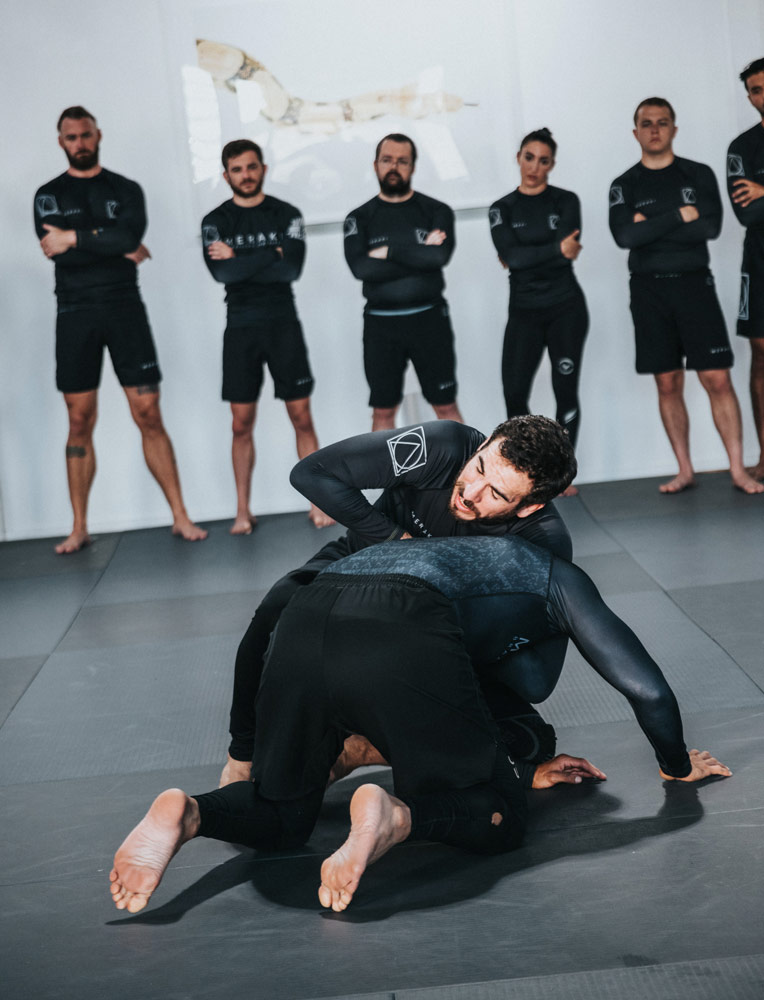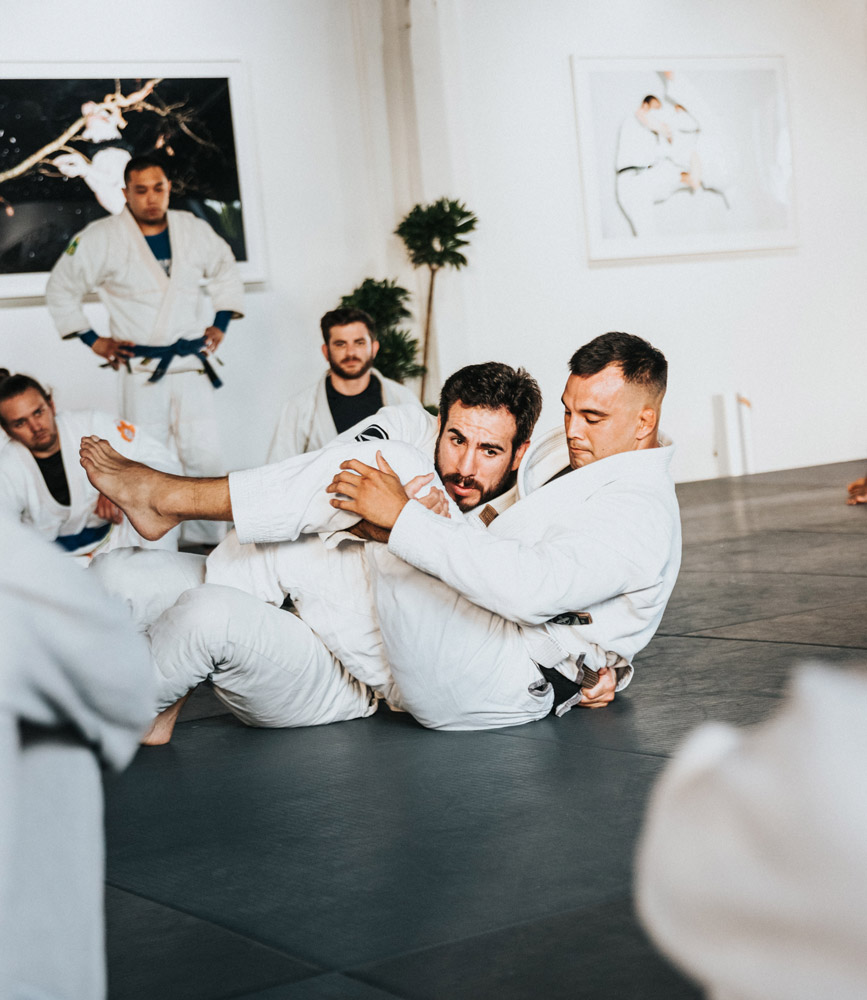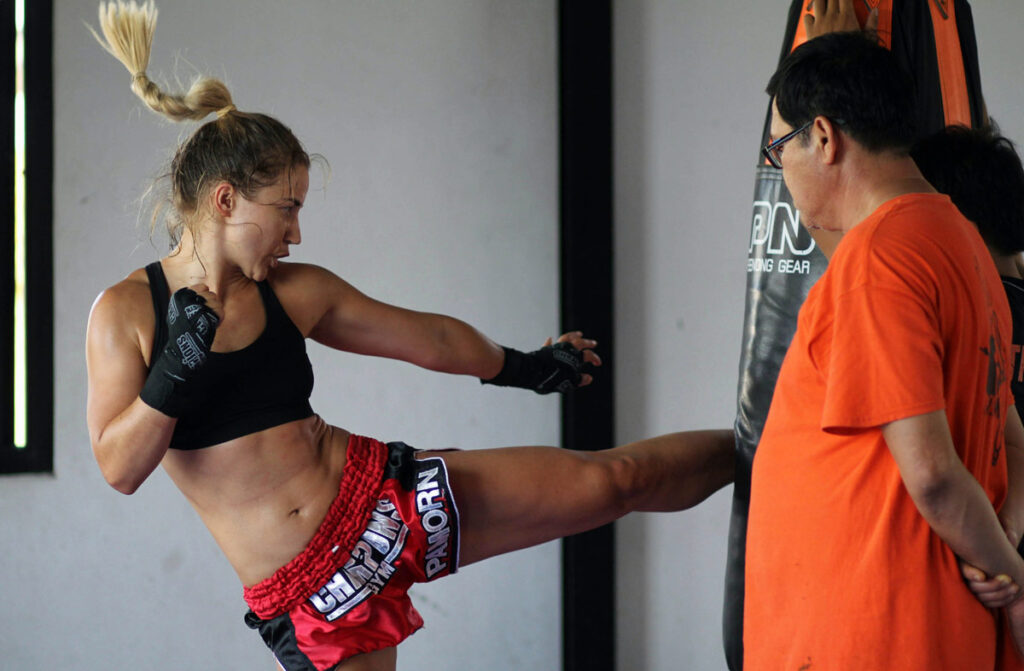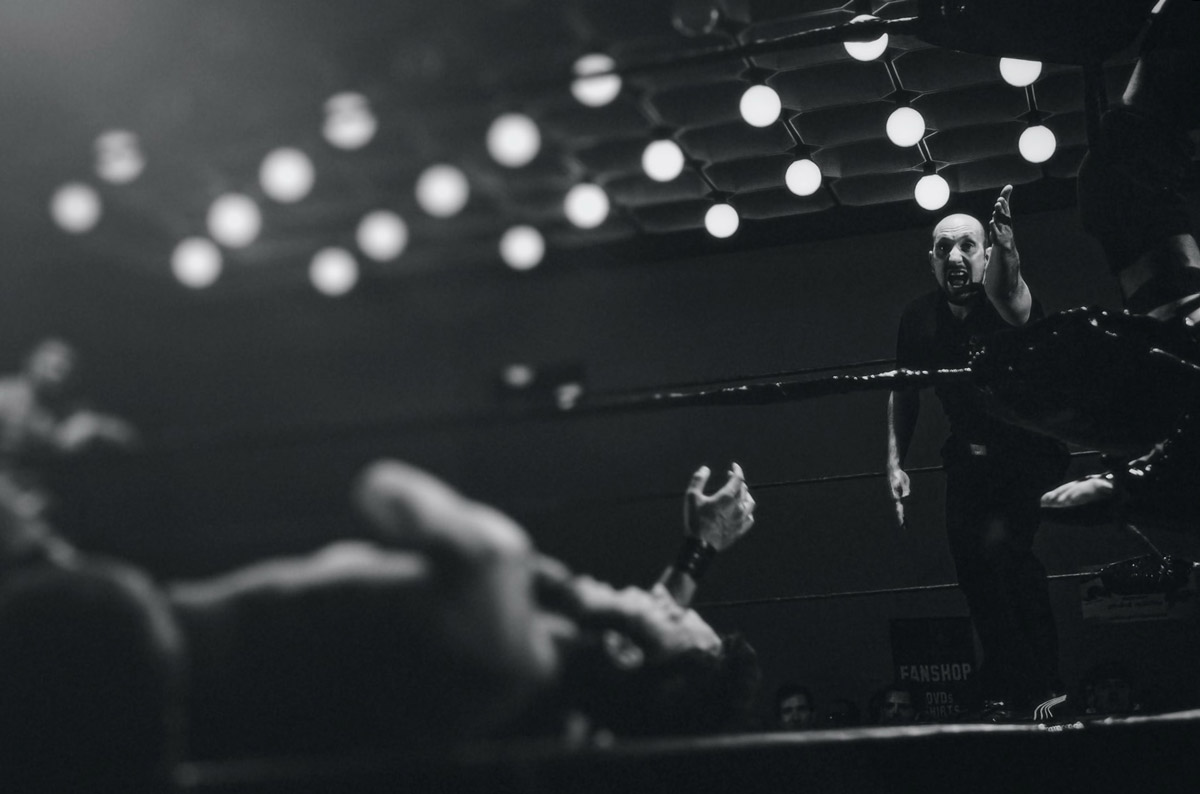In this article, we’re going to breakdown Brazilian Jiu Jitsu (BJJ) vs Muay Thai.
These are two of the most prolific fighting styles in
We’re going to see how they measure up against each other and help you decide which one is the right fit for you.
Let’s get started!
What is Brazilian Jiu-Jitsu (BJJ)?
As the name suggests, Brazilian Jiu-Jitsu is a Japanese originated martial art that has evolved and grown into its own in Brazil.
Traditional Jiu-Jitsu was introduced to Brazil by a Japanese master named Maeda who was part of a diplomatic mission to help establish Japanese settlements in the country in the early 1900s.
Among the earliest students of Maeda in Brazil were the Gracie family.
In the following years, this family led by Royce Gracie, has adapted and conceived new techniques to make it truly unique and improved from its Japanese predecessor.
The Gracies have become synonymous with the sport and have used their craft to amaze both fighters and audiences of

And make sure to check out our comparison of Judo vs Brazilian Jiu Jitsu to learn more about its compelling history!
Who Should Train Brazilian Jiu Jitsu?
Brazilian Jiu-Jitsu is a suitable for everyone.
Whether you are a seasoned martial artist or a person considering dabbling in martial arts for the first time, BJJ provides a strong foundation for grappling and fighting on the ground.
For women, BJJ is particularly a very practical self defense system since it can help a woman overcome and submit a larger male attacker.
BJJ is not dependent on striking to overcome an opponent and so you don’t need to know how to throw a hard punch to defend yourself effectively.
Unique Features of Brazilian Jiu-Jitsu (BJJ)
Brazilian Jiu Jitsu is unique as a fighting style because striking does not factor heavily into it. In terms of self-defense, it is truly rooted in defense rather than offense and its techniques focus on neutralizing an opponent’s aggression by gaining control of him.
Another unique aspect to BJJ is the fact that it has been designed – and proven beyond a reasonable doubt – to help smaller people overcome stronger opponents.
Through the use of timing, pressure, and study of the human body and mastery of techniques, it levels the playing field.
Unique Benefits of Brazilian Jiu-Jitsu
Brazilian Jiu-Jitsu training develops not only strength and flexibility through training, but is a form of fighting that emphasizes mental reflexes and strategic thinking.

This is due to the mental nature of the fighting style which requires fighters to anticipate, plan, react, and counter movements by their opponents.
BJJ has also been said to help develop patience, calm and humility. Brazilian Jiu-Jitsu fighters will inevitably experience being submitted and restrained numerous times throughout the learning process.
This has positive impacts as it helps remove the glamour of combat.
A very good way to understand a rear naked choke is to experience it firsthand and BJJ training does that – but in a safe and controlled setting.
Fighters who experience these things, gain understanding of the value and importance of training.
What is Muay Thai?
Muay Thai is a traditional martial art from Thailand which carries with it a legacy spanning hundreds of years and which continues to be one of the most effective
Known as the art of eight limbs, practitioners use not just their two fists and their two feet and shins to inflict damage, but also their two knees and two elbows.
As a form of unarmed combat, Muay Thai has an advantage over western boxing which depends solely on fists. (Check out our guide to Boxing vs Muay Thai!)
As a standing and striking style, fighters must develop various explosive techniques such as elbow strikes and training emphasizes stamina and the importance of cardio workout in addition to strength training.
And Muay Thai is a pillar of mixed martial arts.
Who should train Muay Thai?
Like Brazilian Jiu-Jitsu we recommend Muay Thai as one of the fighting styles that bring a variety of benefits for everyone. People looking to get in shape will benefit from the HIIT style of training.
People looking to learn some simple self defense techniques will learn simple and reliable strikes in a relatively short amount of time. This makes it a good match for people who want to learn basics without having to commit too much time.
Muay Thai is great for women, men and children. Anyone who practices it will gain benefits ranging from fitness, self defense, confidence and flexibility by training this fighting style.
Unique Features of Muay Thai
Muay Thai is unique for a number of reasons. Muay Thai is a standing martial art that depends on explosive striking techniques from not just punches and kicks, but also elbows and knees.
This makes it extremely effective and fairly easy to learn as the basic, fundamental techniques are not overly complicated or elaborate in comparison with grappling and wrestling.
It is a martial art that does not have a ranking system based on belts. A serious fighter’s expertise and experience can be measured by his or her fight record rather than the color of his or her belt.
Muay Thai originates from Thailand and has influenced martial arts styles from surrounding countries including Cambodia, Laos, Vietnam and Burma, as well as shaped influenced martial artists in Europe and the United States.
Unique Benefits of Muay Thai
The structure of a typical training session as well as the length of the rounds mirror a HIIT workout which brings tons of health benefits for the heart, muscles, and even your skin.

This is a martial art that is excellent for body conditioning and the benefits in terms of cardiovascular endurance cannot be understated.
Muay Thai also is exceptional for developing hip flexibility. With many painful physical conditions resulting from poor hips, you definitely want to make sure you’re building strong and flexible hips and few martial arts help better at this than Muay Thai.
BJJ vs Muay Thai: What’s Easier to Learn?
BJJ has been called the human chess and its techniques are intricate and require strategic thinking, practice and flexibility.
Muay Thai also requires strategy but as a striking sport, it is less intricate in terms of technique and places more emphasis on explosive striking and speed.
You might learn how to strike or clinch in Muay Thai in a short period of time, but you’ll need considerable time in the gym before being ready to step into a ring.
To gain mastery of BJJ is a long term commitment and practitioners will need to work their way up a structured belt system. Muay Thai is easier to learn but also difficult to master.
For these reasons, we say Muay Thai is easier to learn than BJJ.
BJJ vs Muay Thai — Which is Better for Self Defense in a Street Fight?
First of all, we believe that true martial artists should avoid unnecessary violence. Fighting should be avoided and only used as a last resort.
That said, if you have to fight, fight to win.
Let’s take a look at the pros and cons of both martial arts when it comes to practical use in a necessary situation.
Advantages of Muay Thai in Street Fighting
Muay Thai provides a variety of striking techniques for using fists, elbows, knees, and legs, which all have the potential to win a street fight.
If an opponent grabs you, Muay Thai techniques such as the clinch will help you defend yourself and set you up to unleash knees or elbows, which can devastate your attacker.
You might sometimes hear people say “most fights end up on the ground.” We aren’t sure about the data, but we believe that striking is the most effective way to ensure that your opponent rather than the fight end up on the ground.
Advantages of BJJ in a Street Fight
If the fight goes to the ground, BJJ is the surest way to control and submit your opponent. BJJ offers the possibility of breaking or dislocating your opponent’s bones or rendering him unconscious. BJJ allows fighters to gain dominance through various techniques, such as joint locks.
It also provides an excellent way to defend yourself from being strangled or pinned down and excels in areas that Muay Thai neglect.
But be warned, BJJ does not help much when facing multiple attackers in a street fight. See Krav Maga vs Brazilian Jiu Jitsu to learn more!
A person on the ground focusing on grappling and submitting one attacker can do little to simultaneously defend himself from being kicked or stomped on by additional attackers.
So Which is Most Effective?
Effective striking skills mastered in Muay Thai training can stop an opponent in his tracks. But if that fails, BJJ can help safely dominate a physically stronger opponent and immobilize or incapacitate.
A well rounded fighter should have at least some familiarity with both.
Overall though, we believe a well timed and placed strike can reduce the need for grappling.
Muay Thai vs BJJ: Which Is Safer to Train?
Most people who train a martial art have a life outside the sport – whether a student or a working professional.
Training martial arts is a great past time and way to stay fit while learning a useful skill. Risking injuries is not something people want to do in the process of training.
So let’s look at both to help you make the best decision for you.
Safety Advantages of Training BJJ
BJJ is a martial art style that, by its very nature, emphasizes humility, caution, and reflection.
Brazilian Jiu Jitsu practitioners develop an acute awareness of their abilities since so much of training involves rolling on the mat and practicing grappling techniques in safe and controlled environments with more and less experienced peers or even inanimate grappling dummies.
Grappling in BJJ training allows fighters to experiment with different techniques and maneuvers and get an idea of how difficult, how effective and how much pain these different techniques can cause.
It does take a toll on the body in terms of your neck, fingers, joints and your ego. Strains are common.
Safety Advantages of Training Muay Thai
Muay Thai is a sport that depends on knees, elbows, punches and kicks to overcome an opponent. Sparring is meant to be carried out in a way that doesn’t put the fighters at risk of serious injury.
In Muay Thai sparring, usually less than 70% strength is used and fighters practice techniques and combinations rather than actually attempt to make serious contact.
This is positive because it means there is little risk of injury from sparring. In actual competition however, the risk of injury is very real.
No matter your confidence, in the ring you will be on the receiving end of the eight limbs of Muay Thai and those strikes can take their toll. For information be sure to check out our article on common Muay Thai injuries!
So Which is Safer to Train: BJJ vs Muay Thai?
As we have written about previously in our article about Shin Conditioning, throwing a kick on an opponent also carries the strong possibility of resulting in pain for the kicker as well.
Until you receive a punch or kick or elbow or knee, you might not fully comprehend how painful this could be. In BJJ, you can safely experience the chokes and holds and gain an understanding without serious risk.
For this reason, we say that BJJ is safer to train than Muay Thai.
BJJ vs Muay Thai: Which one should you learn?
Both Muay Thai and Brazilian Jiu Jitsu develop fundamental skills that are necessary for becoming a well-rounded fighter.
Muay Thai provides the striking techniques necessary for standup contests and street altercations, while BJJ is imperative for overcoming opponents if and when fights go to the ground.
Muay Thai is helpful when facing multiple attackers as it equips a fighter with weapons for lashing out with speed and without committing necessarily to entangling with a single opponent.
With Muay Thai can help you maximize the effectiveness of your punches, kicks, elbows and knees but larger opponents
BJJ is effective in confined spaces. And crucial for facing off with a larger opponent or for subduing someone without necessarily causing injury.
- If you want to be fit, learn Muay Thai.
- If you want to be safe, learn BJJ.
- And if you want to be a complete fighter, learn both.
But if you’d like to vege out, watch these Muay Thai movies.
